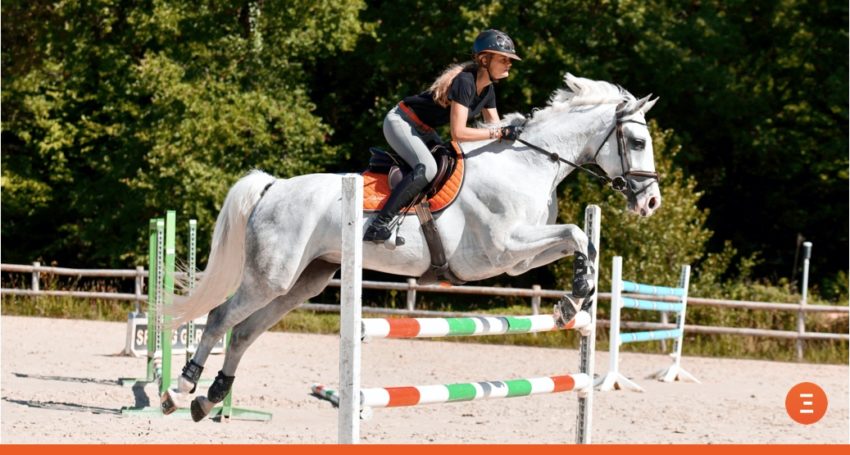
4 Gridwork Exercises that you have to try
In case you hadn’t noticed, it was winter time… and winter means for us in the north of France that we have to ride in the inside arena. And oftentimes the inside arena means that we can’t jump. What’s the solution then? Gridwork exercises of course! I’ll give you four examples that will change your world.
Table des matières
- The advantages of gridwork exercises
- For the horse:
- For the rider :
- 4 examples of Gridwork exercises
- Exercise #1 – The Baby Lane
- Exercise #2 – The Lane without an End
- Exercise #3 – Goal: Work on the punch off the ground
- Exercise #4 – 3 Long Strides – 3 Short Strides
- Discover Luciana Diniz’s Butterfly Method
The advantages of gridwork exercises
Gridwork is a physical exercise that can be challenging for the horse because of the succession of jumps so close together. You have to avoid any unnecessary repetition. The more the horse is tired, the harder it gets and the horse can get bad memories from the session. You can by the way keep track of the number of jumps and of the heart rate with the Equisense Motion Sport
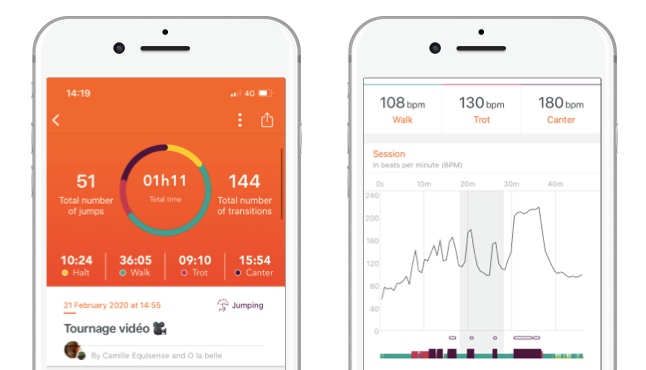
Still, gridwork exercises have a lot of advantages that I will try to summarize for you.

For the horse:
- The horse gains coordination and therefore it gains flexibility when it approaches a fence and improves its jumping technique.
- The horse’s punch off the ground is firmer and more symmetrical.
- It’s an excellent exercise to improve the chest and abdominal muscles, as well as the propulsive muscles.
- It allows you to pinpoint and rectify your horse’s weaknesses (for instance if your horse always shifts on one side when it approaches a fence or lands).
- It allows the horse to be in the best possible situation to approach bigger and larger fences.
📚 : Learn More: Here is How To Muscle Your Horse’s Chest!
For the rider :
- It will help the rider see the strides better since everything is spaced precisely. The rider can then gain confidence.
- They will also teach the rider to “let go” (for riders like myself who want to absolutely control EVERYTHING when we approach a fence, and tend to hinder our horses).
- They will also help the rider gain some flexibility with their hands when approaching a fence and improve their sensations.
- It will allow the rider to gain confidence on higher fences since approaching will be easier within a line than with an isolated fence.
- They will allow the rider to work on their form and flexibility over close jumps.
4 examples of Gridwork exercises
Exercise #1 – The Baby Lane
This first exercise is a short gridwork exercise which can be good for the mechanization of young horses. It’s a triple with a twist which consists in going over a bounce jump, a vertical and an oxer. For young horses it can be interesting to use cavalettis in the bounce jump, and to put a cross as the oxer’s first plan. It can help the horse go straight and in the middle of its jumps. The ground poles in the middle help the horse regulate its scope and cadence between each fence. They also improve its punch off the ground and therefore help the horse mechanize itself.
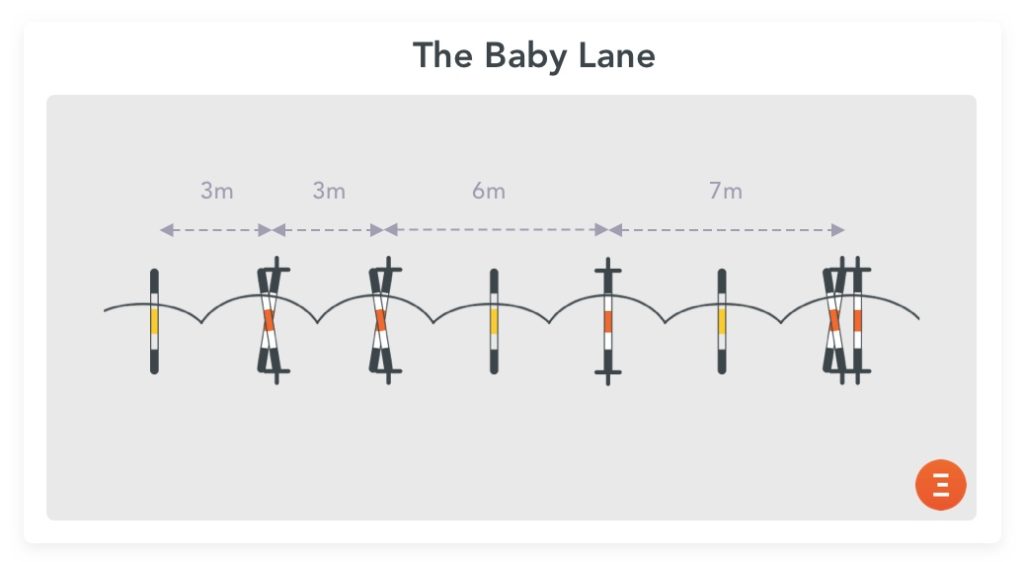
The distances are indicative and to be adapted according to the horses. They will be a little short if you raise the poles a little. Start by testing the distances on the ground poles just in case.
📚 Read as well: Which Distance Should I Put Between Ground Poles or Fences?
If your horse shifts as you go along, don’t hesitate to put poles in ears or crosses or even to put poles on the ground perpendicular to the obstacle. In the latter case, foam poles are preferable to limit the risk of injury. Pool noodles are also a good choice.
Exercise #2 – The Lane without an End
This gridwork exercise brought to you by David Coursier is very complete. Its goal is to teach the rider to work in harmony with their horse, to follow the jumps correctly and keep their form.
It goes as such: ground pole – 3 strides – bounce jump – 1 stride – vertical – 2 strides – vertical – 1 stride – oxer with ground poles between each jump so the horse’s punch off the ground is improved.
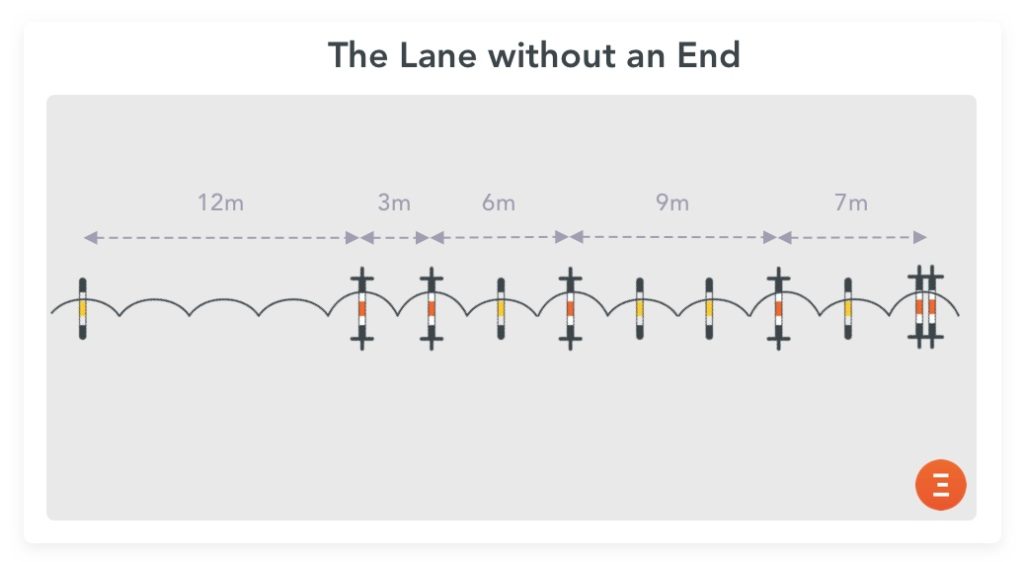
The spacing we are giving you needs to be adjusted for your horse. It will become shorter if the fences are higher. Test it out first with only ground poles just to see how it goes.
📚 Read as well: Which Distance Should I Put Between Ground Poles or Fences?
If your horse shifts little by little, don’t hesitate to install V poles, crosses or ground poles perpendicular to the fence. In the last case you should try to use foam bars to avoid any injury. Pool noodles will do the trick just fine (and they are pretty cheap).
Exercise #3 – Goal: Work on the punch off the ground
This third gridwork exercise is designed to work on the horse’s punch off the ground. It consists in successively jumping with 3 strides and 3 ground poles between the jumps (spaced by 3m each).
The ground poles will make the horse increase its elevation and gain in regularity in its scope and cadence, and therefore improve its punch off the ground. Ground poles will also help the rider take less actions in the line, and help the horse stay focused.
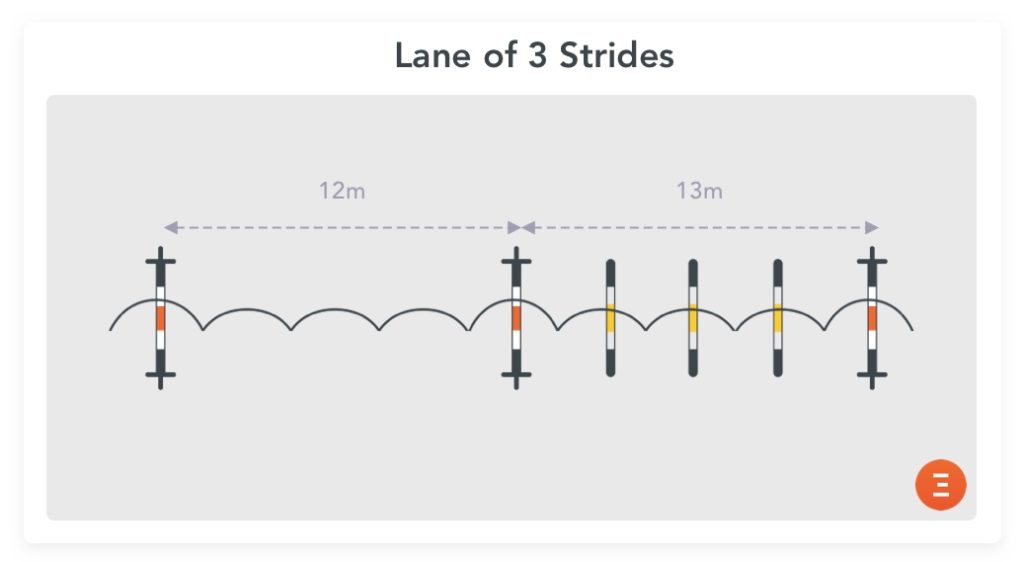
Exercise #4 – 3 Long Strides – 3 Short Strides
This last gridwork exercise is designed to help the horse gain readiness. He has to be able to extend his strides and take off closer to go over an oxer, and then to shorten them to approach a vertical. This exercise combines both difficulties.
The first bounce jump approached at trot helps the horse gain some elevation. It has after the bounce jump 3 strides to lengthen and cover the large oxer. Then 3 strides again to shorten and approach the vertical. It’s a great exercise for horses in need of flexibility in combinations. Be careful, on higher fences you need to change the spacing and the exercise can be a bit more difficult. Watch out for your horse.
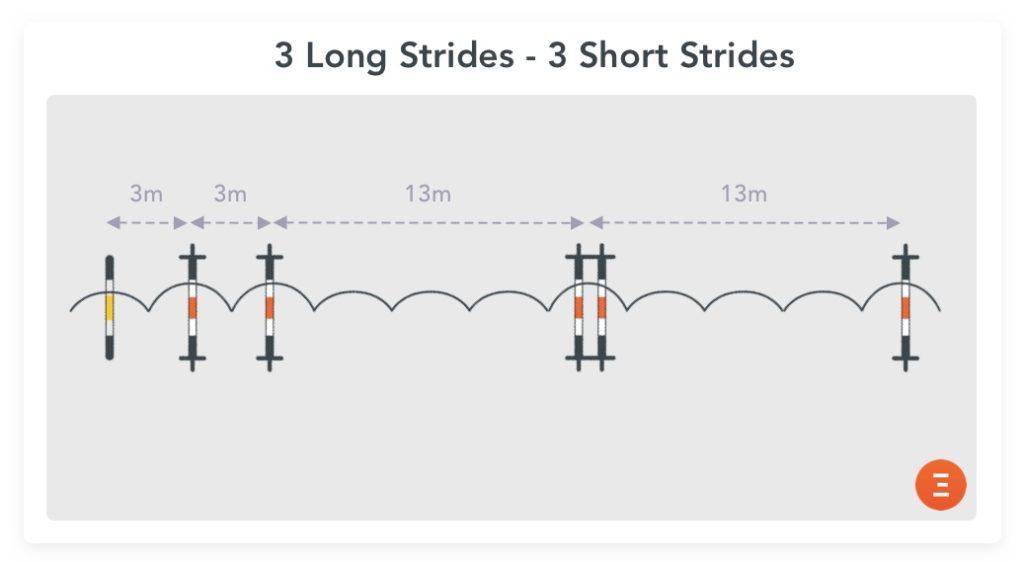
Discover Luciana Diniz’s Butterfly Method
The Butterfly Method from Luciana Diniz, Olympic show jumping rider, will be the perfect complement to your work on the gymnastic lines in winter.
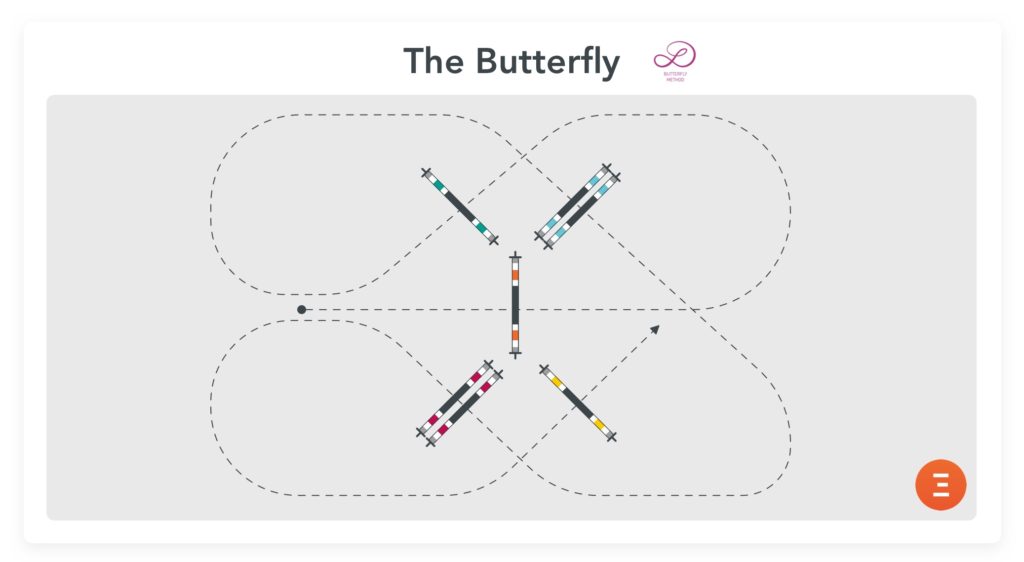
Here you for gridwork exercises ideas! You want some more? Lucky for you, you can find a new program every month in our mobile app Equisense, available on iOS et Android!
See you soon for another article,
Camille Saute
R&D leader at Equisense